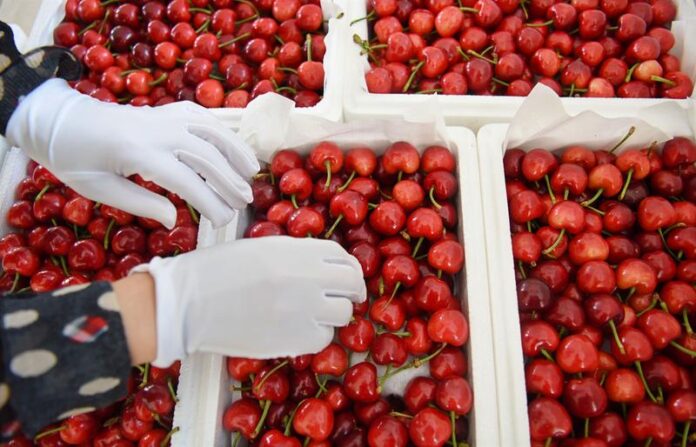Following the opening of the China-Pakistan border on April 1, the Chinese government has allowed the import of cherries from Pakistan. But the trade requires stiff phytosanitary standards that are difficult to comply with, according to experts.
The Chinese embassy informed the Ministry of National Food security and Research through a letter that the General Administration of Customs of the People’s Republic of China (GACC) has decided to carry out compliance inspections through remote video investigations on orchards and cold treatment facilities for the export of fresh cherries from Pakistan to China.
Zulfiqar Monin, a leading exporter of fresh fruit, has said that the cherries produced in Pakistan, especially those from Gilgit Baltistan, are juicier than normal cherries but also highly perishable. Because of the Chinese protocols, these cherries cannot be exported to China under the existing phytosanitary measures. Under the protocol, local cherries need to be kept under one-degree temperature for over 18 days, and after that period, the health of the fruit will be checked for final export.
The only way to make the local fruits able to enter into the Chinese market is to grow imported cherry plants that may produce fruits with a shelf life of around 25 days in one degree centigrade. The existing fruits can’t survive under one degree centigrade for more than one week.
However, there is no packhouse or major cold storage to keep the cherry and treat them as per protocol in Gilgit-Baltistan. To facilitate the export to China, the existing rules need to be relaxed, and imported cherries need to be cultivated as a long-term strategy.
Cherry is a seasonal fruit with a limited lifetime grown throughout the lowlands of Gilgit Baltistan. Some of its varieties are black, red, and French cherry. It is a major source of cash for hundreds of families in the region. It has recently garnered the attention of traders in Gilgit Baltistan and has been started as a business by supplying to the rest of the country in Pakistan.
Growth avenues
With trade permission, the local cherry industry can blossom as Chinais the largest consumer of cherries in the world. The Chinese and Pakistani governments have worked together since 2019 to establish an agreement on the export of fresh cherries from Pakistan to China. The export protocol includes strict conditions on quarantine pests and cold treatment facilities, which must be met by cherry orchards, packaging plants, and refrigerated warehouses. With cherries from Pakistan enjoying zero tariffs when exported to China under the China-Pakistan Free Trade Agreement, the cherry industry in Pakistan has the potential to grow further.
Currently only 10% of the cherries are available for export, but there is significant potential for further export growth. With China importing more than 200,000 tons of cherries annually, the approval of Pakistani cherries to enter the Chinese market is expected to drive the development of Pakistan’s domestic cherry industry.
























